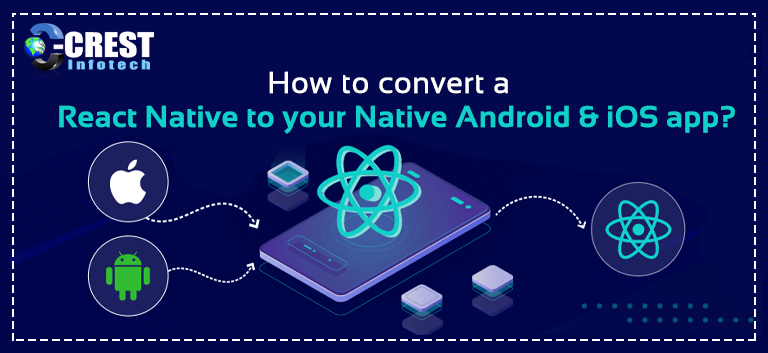Mark Zuckerberg said eight years ago, “The biggest mistake we made as a business was betting too much on HTML5 as opposed to native ones.” He vowed to come back with a better user experience because of this. React Native was launched six years ago at Facebook’s ReactJS conference in Feb 2015. React Native was released as an open-source platform in March 2015. CSS or HTML are not required by React Native. Instead, in Java or Objective-C, React Native developers write native code.
It is more likely to turn into a revolution when the owner of a network with billions of end users makes a move. And, with Respond Native, the same thing occurred. Some of the people who started digitally were and are persuaded that they wanted the platform, and so they created React Native apps.
The scalability and ease of complexity of the system is unparalleled, and the software offers an improved user experience. In direct contrast to this, native apps are still considered by some software development firms as the go-to-way for app development. Businessmen are convinced of the technology stack that these businesses approve in most of the cases, given their experience.
They end up sparing more, however, if the Android and iOS app specifications are not at par with the growth.
Which is the way to go, then?
To build a highly stable Android and iOS app, there are two ways:
Using Respond Native to create Native Apps
Converting an existing app to a React Native application
You don’t need to spare another major budget if you are invested in the creation of a native app. To update the native app to React Native, you can recruit dedicated React Native developers.
We present a full guide below with main aspects that you should consider before using React to build native apps for Android and iOS.
What are the limitations of developing apps using React Native?
The reality is that when it comes to developing native apps using React, the occurrence of bugs, errors, and security vulnerabilities is very common. You might experience such performance problems, despite the popularity of React Native.
However, the React Native developers will stay on top of the smooth development of native apps if you are well aware of these issues.
Requires native developers even when it possesses cross-platform functionality
It is evident that you need to rely on the developers of the Native App in some of the processes where JavaScript is used. This is actually true for the case in which for your React Native applications you need to implement high computational operations.
In addition, to incorporate SDKs such as Google Analytics, you will need to understand the processing of the native library. Also, since it illustrates cross-platform, it is viewed that on Android and iOS, any software feature written on a hybrid system will function exactly the same. For several applications, it runs in the exact way; however, it is not the case during every development episode.
The basic goal behind every application is to provide end-users with various features and functionalities for a better conversion rate. As a result, an abstraction layer is introduced on the native platform to generate more functionalities during the creation of an app in React Native.
As this is an abstract layer, it does not identify bugs. In the abstraction layer, thus, a bug means a bug in the programme. They are hard to classify and diagnose. In addition to this, in turn, an abstraction level means you have to rely on third-party resources to ensure that your system remains valid.
Debugging style is inconvenient for building React Native apps
If you have a Respond Native developer newbie, it can be a little inconvenient to debug types. This is because you do not rely on the chrome debugger to modify each element’s property in a different way.
Style debugging can be a little distracting as it boosts and covers the entire computer. In other words, debugging styles in React Native can be complex in nature and can make it difficult for developers to handle items.
Complicated iOS deployment
The difficulty when it comes to testing is one of the problems with the development of the React Native iOS app. You will have to endure the difficult task of making a decision about the testing method when creating an app using React Native. Apple’s Testflight tool is typically effective.
This comes on the basis of the difficulties associated with both obtaining certificates and profiles of provisioning. The deployment phase, on the other hand, is trouble free and smooth.
What are the advantages of using a React Native for your existing Native android and ios apps?
In order to create a scalable, stable and highly secure application, the degree of competition across the IT industry is rising. As a consequence, the buzz word for the millennium has been cross-platform app growth.
We have selected React Native for the conversion to a high-performance and stable app on similar lines. Besides this, you can concurrently create two applications. If you are finished with the conversion, there are several more benefits that you can get.
You can also Hire Dedicated Developer and Hire Mobile Developer. Contact Crest Infotech to know more about Dedicated and Mobile Development services in Details.



